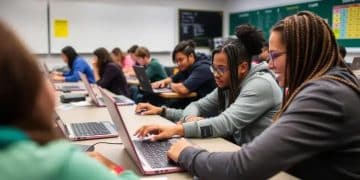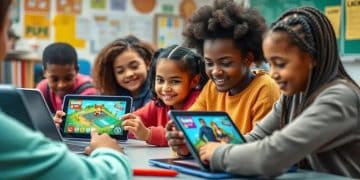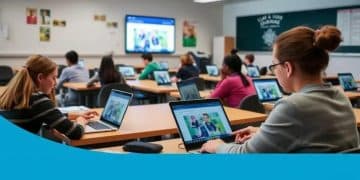Insights on digital literacy curriculum for modern education
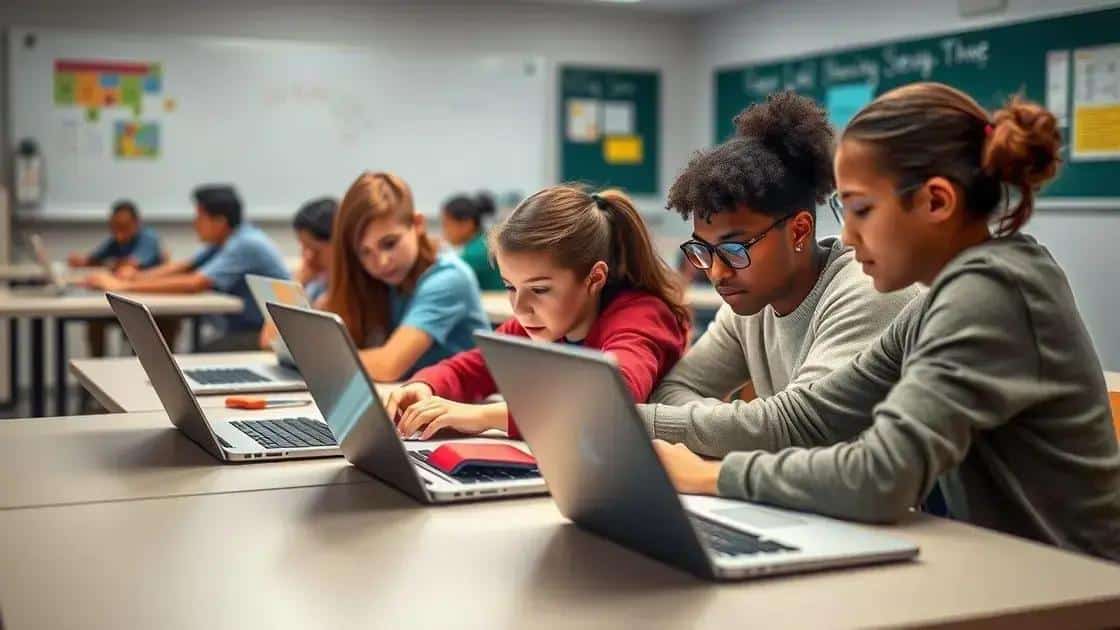
Integrating digital literacy into education equips students with essential skills to navigate technology effectively, preparing them for future success in a tech-driven world through practical learning strategies and assessments.
Insights on digital literacy curriculum reveal how essential these skills are in our technology-fueled society. Have you considered how digital literacy affects your learning or teaching? Let’s dive in.
Defining digital literacy and its importance
In the age of technology, defining digital literacy is crucial. It goes beyond simply knowing how to use a computer. Digital literacy involves the skills necessary to find, evaluate, create, and communicate information using digital technologies. This understanding is essential for both students and educators.
Knowing how to effectively navigate the digital world allows individuals to access information and make informed decisions. It promotes critical thinking and helps in enhancing creative skills as well.
The Importance of Digital Literacy
Emphasizing digital literacy in education is vital for several reasons:
- It empowers students to research accurately and responsibly.
- It enables them to participate fully in today’s technology-driven society.
- It prepares them for future job markets that increasingly require tech-savvy skills.
Digital literacy is not just a personal skill; it’s a community necessity. Close collaboration among educators and families can help ensure that students develop these crucial skills. As technology evolves, so must our approaches towards teaching and integrating digital literacy into daily learning.
Therefore, understanding and implementing digital literacy is essential not only for academic success but for fostering informed, responsible citizens. By prioritizing digital skills, we help pave the way for a future where individuals can thrive in a digital world.
Integrating digital literacy into the curriculum
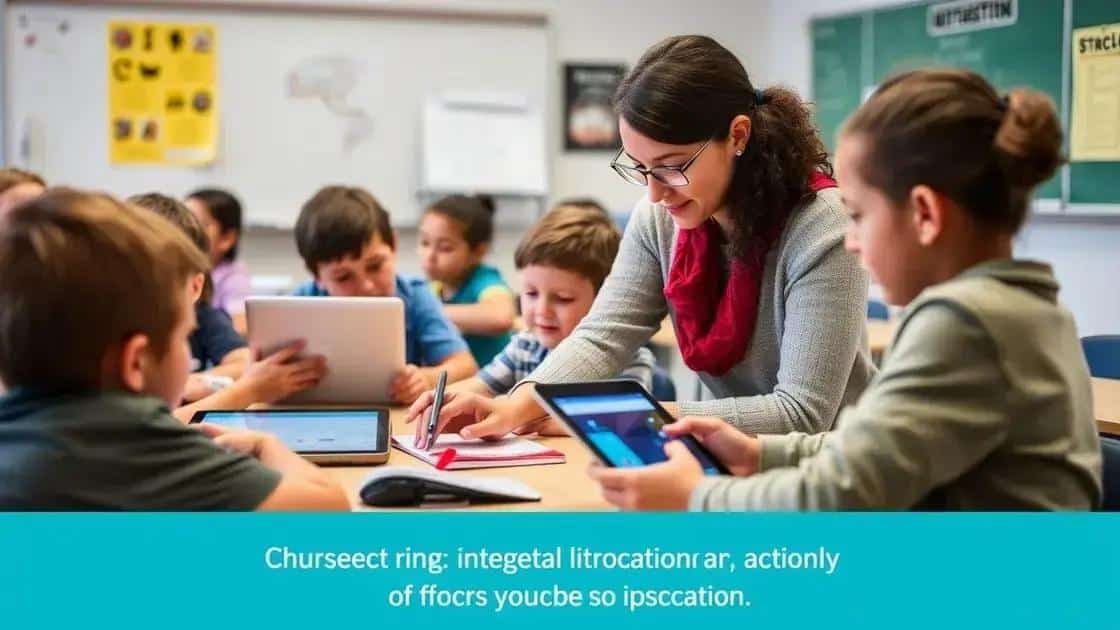
Integrating digital literacy into the curriculum is essential for preparing students for the modern world. This process involves embedding digital skills across various subjects and learning activities.
It is important because it not only enhances students’ ability to handle technology but also improves their communication and critical thinking skills. When students are exposed to digital literacy from a young age, they become more adaptable and better equipped for the future.
Strategies for Integration
There are several effective strategies for integrating digital literacy into the curriculum:
- Incorporating research projects that utilize online resources.
- Encouraging the use of digital tools for presentations and collaborations.
- Implementing coding and computer science courses early in education.
Teachers can also create assignments that require students to evaluate information from different digital sources. This promotes not only digital literacy but also critical thinking and discernment.
Cross-curricular approaches allow for deeper learning experiences. For example, a history lesson can involve researching historical events online, while a science project might include using data analysis software. These real-world applications help students understand the relevance of digital skills.
Integrating digital literacy in this way prepares students not just for academic success but for life beyond school. As technology continues to evolve, being digitally literate is no longer optional; it is a necessity.
Practical strategies for teaching digital skills
Teaching digital skills effectively requires practical strategies that cater to various learning styles. One key approach is to make lessons interactive and engaging. When students are involved in their learning, they retain information better.
One practical method includes using real-world scenarios. For example, setting up online projects that mimic workplace tasks can help students understand the relevance of their skills in everyday life. They can work on tasks like creating presentations or managing online communications, giving them useful experience.
Incorporating Technology
Incorporating technology into daily lessons can also enhance learning:
- Utilizing educational apps that teach coding and digital design.
- Integrating videos that explain complex topics in an accessible way.
- Encouraging collaborative platforms where students can share ideas.
Hands-on activities, such as coding workshops or digital storytelling projects, can foster a love for technology. Students enjoy being creative, which can lead to a deeper understanding of how digital skills apply in various contexts.
Feedback is essential in the learning process. Regularly provide constructive feedback to help students improve their skills. For example, using peer reviews can be an effective method to encourage collaboration and critical thinking among students. This also helps them become comfortable with evaluating the work of others.
Moreover, incorporating game-based learning can be a powerful way to teach digital skills. Games can motivate students to solve problems and think critically, all while having fun. These strategies not only enhance their learning experience but also prepare them for a technology-driven future.
Assessing digital literacy in students
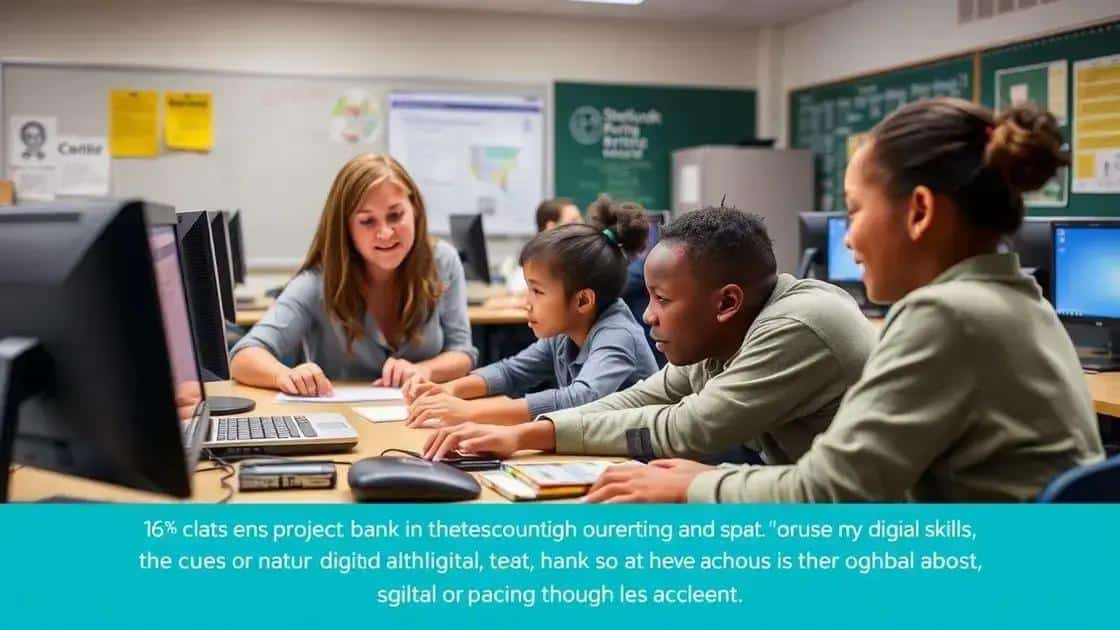
Assessing digital literacy in students is essential for understanding their skills and areas for improvement. This process not only helps teachers gauge student proficiency but also guides curriculum adjustments.
One effective assessment method is using practical projects. Students can create digital presentations, conduct research, or develop websites to showcase their understanding of technology. These projects give a hands-on experience and reflect real-world applications of their skills.
Types of Assessment
Different approaches can be employed to assess digital literacy:
- Quizzes on digital tools and their functionalities.
- Group projects that require collaborative use of technology.
- Self-assessments where students reflect on their own digital skills.
Using rubrics is beneficial for providing clear criteria for these assessments. Rubrics can outline expectations for each project, including creativity, content accuracy, and technical skills.
In addition to projects, teachers can conduct live demonstrations to evaluate students’ ability to navigate different software applications. This interactive method encourages engagement and allows for immediate feedback.
Peer assessments can also play a role. Allowing students to review each other’s work fosters a collaborative learning environment. It encourages them to think critically about their peers’ digital skills and offers diverse perspectives.
Lastly, continuous assessment is key. Regularly checking in on students’ digital skills through informal observations or quick checks for understanding helps teachers provide ongoing support and adjust instruction as needed. This ensures that students remain engaged and continuously develop their digital literacy skills.
In conclusion, integrating digital literacy into education is vital for students’ success in today’s tech-driven world. By using practical strategies, teachers can foster essential skills and prepare learners for their future careers. Assessing digital skills through hands-on projects and continual feedback enhances understanding and engagement. As we embrace these educational approaches, we empower students to navigate the digital landscape with confidence and creativity. The focus on digital literacy ultimately shapes informed, tech-savvy citizens who are ready to face the challenges of tomorrow.
FAQ – Frequently Asked Questions about Digital Literacy in Education
What is digital literacy?
Digital literacy refers to the skills needed to use technology effectively for finding, evaluating, creating, and communicating information.
Why is it important to assess digital literacy in students?
Assessing digital literacy helps educators understand students’ skills, identify areas for improvement, and guide curriculum changes.
What are some practical strategies for teaching digital skills?
Strategies include hands-on projects, incorporating technology in daily lessons, and using peer assessments to enhance collaboration.
How can continuous feedback improve digital skills?
Regular feedback helps students identify their strengths and weaknesses, allowing them to grow in their digital literacy effectively.

